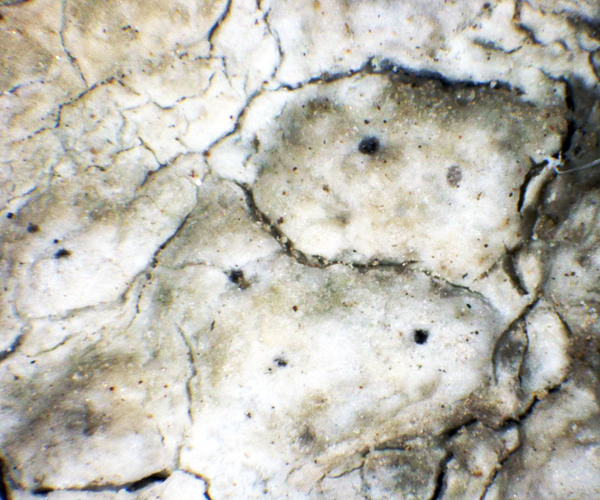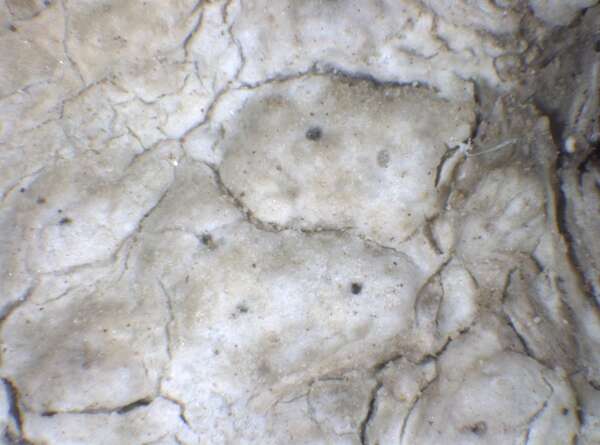Pertusaria alpina Ahles
Hepp ex Ahles, Pertusar. et Conotr.: 12, 1860.
Synonyms: Pertusaria alpina var. abietina Erichsen; Pertusaria alpina var. occulta Erichsen; Pertusaria laevigata (Th. Fr.) Anzi non (Nyl.) Arnold; Pertusaria leioplaca var. laevigata Th. Fr.
Distribution: N - Frl, TAA (Nascimbene & al. 2007b), Lomb, Emil (Fariselli & al. 2020). C - Laz, Sar. S - Bas, Cal (CLU 16163), Si.
Description: Thallus crustose, endosubstratic or thinly episubstratic, smooth or somewhat verrucose, continuous to cracked, yellowish white, pale grey or yellowish green. Apothecia perithecioid, completely immersed in 1-2.5 mm wide, basally not constricted thalline warts, with (1-)3-6(-9) pale, punctiform ostioles per wart. Epithecium colourless or pale brown, K-, C-; hymenium colourless; paraphyses branched and anastomosing, poorly coherent. Asci 8-spored, broadly cylindrical, the apex with a broad ocular chamber, the outer sheath K/I+ blue, otherwise K/I-, Pertusaria-type, with uniseriately arranged spores. Ascospores 1-celled, hyaline, ellipsoid, 30-70 x (16-)20-32 μm, with a double, 2.5-5 μm thick, finely punctate wall. Photobiont chlorococcoid. Spot tests: thallus K+ yellow, C-, KC- or KC+ yellow, P- or P+ faintly yellow; medulla P+ orange-red only around the apothecia, otherwise P-. Chemistry: coronaton and stictic acid (major), constictic and cryptostictic acid (minor or traces).
Note: a mainly temperate species found on the smooth bark of deciduous trees, especially on twigs and branches. The earlier record from Campania by Nimis & Tretiach (2004), refers to P. werneriana. It is included in the Italian red list of epiphytic lichens as “Endangered” (Nascimbene & al. 2013c).
Growth form: Crustose
Substrata: bark
Photobiont: green algae other than Trentepohlia
Reproductive strategy: mainly sexual
Commonnes-rarity: (info)
Alpine belt: absent
Subalpine belt: extremely rare
Oromediterranean belt: absent
Montane belt: very rare
Submediterranean belt: absent
Padanian area: absent
Humid submediterranean belt: extremely rare
Humid mediterranean belt: extremely rare
Dry mediterranean belt: absent
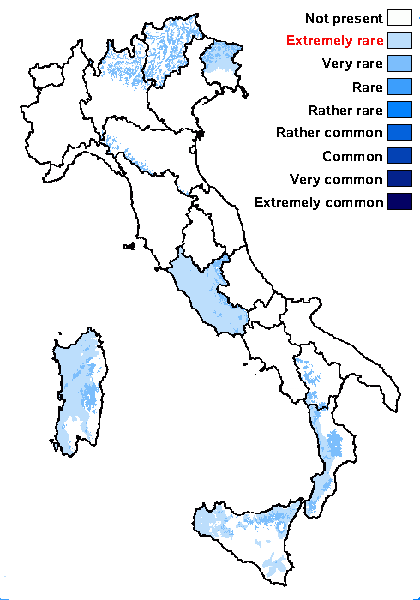
Predictive model
Herbarium samples
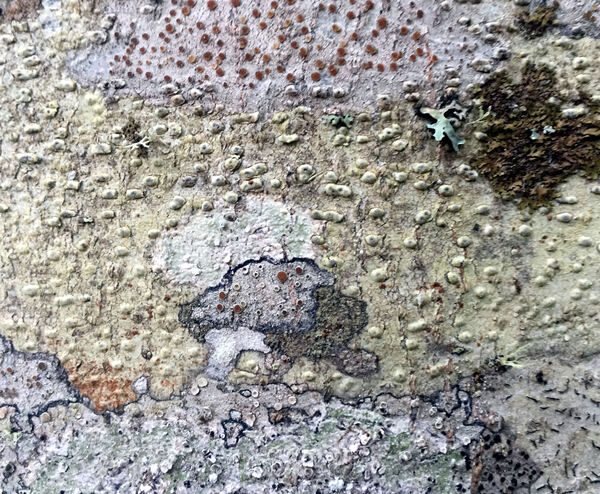

P.L. Nimis; Owner: Department of Life Sciences, University of Trieste
Italy, Friuli Venezia Giulia, Udine, Bosco della Stua, Lago di Sauris, 1000m
09.09.2016
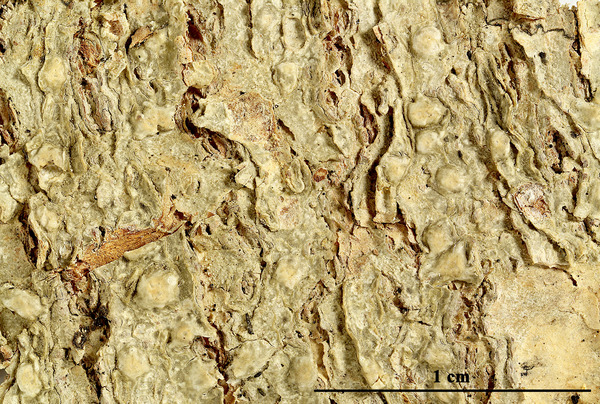

Felix Schumm - CC BY-SA 4.0
[2080], Schweiz (OW), Kanton Luzern, Merliwald östlich von Sörenberg, nördlich des Giswiler Stocks (651/187) ca. 1350 m, an Acer pseudoplatanus (63 cm Umfang). Leg. et det. F. Schumm, 06.09.1972
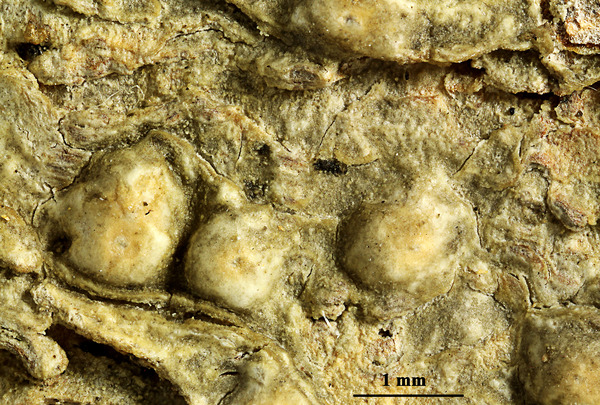

Felix Schumm - CC BY-SA 4.0
[2080], Schweiz (OW), Kanton Luzern, Merliwald östlich von Sörenberg, nördlich des Giswiler Stocks (651/187) ca. 1350 m, an Acer pseudoplatanus (63 cm Umfang). Leg. et det. F. Schumm, 06.09.1972
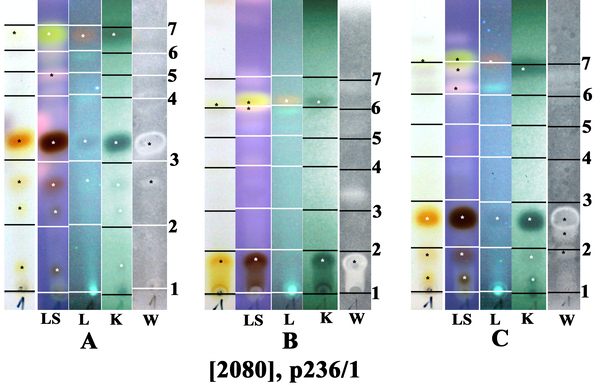

Felix Schumm - CC BY-SA 4.0
[2080], Schweiz (OW), Kanton Luzern, Merliwald östlich von Sörenberg, nördlich des Giswiler Stocks (651/187) ca. 1350 m, an Acer pseudoplatanus (63 cm Umfang). Leg. et det. F. Schumm, 06.09.1972
1: coronaton (=4,5-dichlorolichexanthone), 2: stictic acid, 3: cryptostictic acid, 4: connorstictic acid, 5: constictic acid, conf. J.A. Elix
Growth form: Crustose
Substrata: bark
Photobiont: green algae other than Trentepohlia
Reproductive strategy: mainly sexual
Commonnes-rarity: (info)
Alpine belt: absent
Subalpine belt: extremely rare
Oromediterranean belt: absent
Montane belt: very rare
Submediterranean belt: absent
Padanian area: absent
Humid submediterranean belt: extremely rare
Humid mediterranean belt: extremely rare
Dry mediterranean belt: absent

Predictive model
| Herbarium samples |


P.L. Nimis; Owner: Department of Life Sciences, University of Trieste
Italy, Friuli Venezia Giulia, Udine, Bosco della Stua, Lago di Sauris, 1000m
09.09.2016


Felix Schumm - CC BY-SA 4.0
[2080], Schweiz (OW), Kanton Luzern, Merliwald östlich von Sörenberg, nördlich des Giswiler Stocks (651/187) ca. 1350 m, an Acer pseudoplatanus (63 cm Umfang). Leg. et det. F. Schumm, 06.09.1972


Felix Schumm - CC BY-SA 4.0
[2080], Schweiz (OW), Kanton Luzern, Merliwald östlich von Sörenberg, nördlich des Giswiler Stocks (651/187) ca. 1350 m, an Acer pseudoplatanus (63 cm Umfang). Leg. et det. F. Schumm, 06.09.1972


